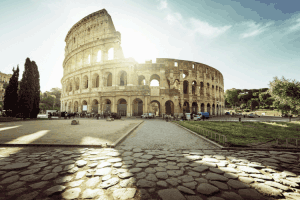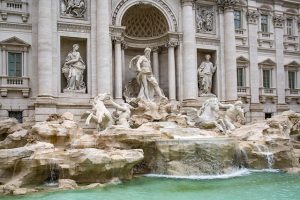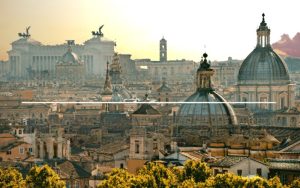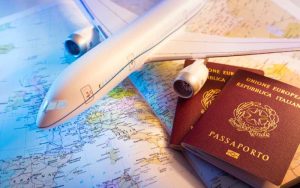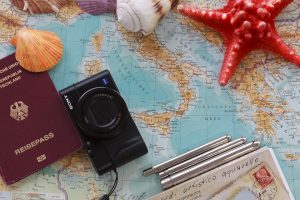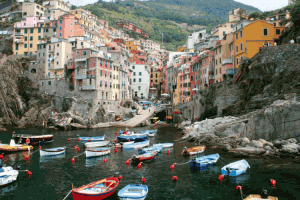Skip the regular tourist traps and forget about the crowd! Charming cities, beautiful lakes, and a wealth of history await exploration in the delectable wonderland that is Northern Italy. Creating the ideal journey with delectable cuisine, stunning landscapes, and undiscovered treasures will be made easy with this guide. Get ready to fall in love with a different side of Northern Italy. Let us examine what you need to know to organize your ideal vacation before you pack your bags and board an aircraft!
Best Time to Visit Northern Italy
Your interests will determine when the best time is to visit Northern Italy. The best seasons to enjoy outdoor activities like hiking are in the spring and fall. There are fewer people and warm weather. Summer is an excellent season to come if your interests lie more in touring and taking in the local culture. But keep in mind that the weather might be hot and congested, particularly in well-known tourist destinations in Italy.
Northern Italy Weather by Month During Summer (June-August)
June: sunny days mixed with showers of rain. High point average: 27°C (81°F).
July and August: The hottest and sunniest months are July and August. High point average: 30°C (86°F).
September is less crowded than other months but it is still warm compararively. It has a high point average of 25°C.
How Long Should a Northern Italy Itinerary Be?
Your desired destinations and travel style will determine how long your plan for the Northern Italy itinerary should be. This summary will help you form a quick decision with ease.
Short Trip (3-5 Days): This is ideal for a quick tour of the main cities, such as Florence, Milan, and Venice. You will not have enough time to explore further; you will only get a taste of the highlights of the area.
A Medium Trip (7–10 days): This gives you a chance to spend more time in-depth exploring the main cities, including day trips to picturesque villages like Lake Como or the Cinque Terre, and even spend a few days in the Dolomites taking in the breathtaking scenery.
Long Trip (10+ Days): Perfect for leisurely travelers who wish to fully experience the local cuisine, customs, and scenery. Take advantage of cooking courses, walk through off-the-beaten-path communities, and spend time enjoying the local culture.
How to Get Around Northern Italy
A sophisticated transportation infrastructure makes it simple to move about and discover the several locations of northern Italy. An overview of your choices is provided below:
Trains: The main form of transportation for large cities and long distances is the train. Trenitalia and Italo are the two primary train companies in Italy. Italo concentrates on fast connections, whereas Trenitalia provides a larger network. You can save money by buying tickets in advance, particularly on busy routes.
Buses: they are an excellent means of transportation for smaller towns and villages over shorter distances. Buses can take longer to go anywhere than trains, but they are usually less expensive.
Rental cars: If you intend to visit rural areas or hidden gems, renting a car will provide you flexibility and independence. If you are dropping off in a different city, take into account extra charges like parking, one-way rental fees, and driving on new roads.
Flights: Domestic flights are an option for longer trips, even if they are less common for short distances within Northern Italy. This is particularly true if you have a tight schedule and need to connect big cities quickly.
Ferries and Water Taxis: The water taxi is Venice’s main mode of public transportation. Ferries are necessary for seeing the Venetian Lake and nearby islands like Murano and Burano. Ferries are another means of transportation used by Lake Como to link its quaint communities.
Walking and Cycling: A lot of Northern Italy’s city centers are pedestrian-friendly, so you can take your time seeing everything and exploring at your own speed. In flatter regions, such as the Po Valley, you might choose to hire a bike for a different viewpoint.
Tips for Choosing Your Transportation
Consider your itinerary: Buses are useful for shorter trips between smaller towns, but trains are best for connections between major cities.
Budget vs.Time: Although trains can be more expensive than buses, they are typically faster.
Travel preferences: Are you drawn to control and flexibility? It is a good option to rent a car and control it on your own terms. Spending less money? Trains and buses are reasonably priced options.
Accessibility of the destination: A car or local transit, such as taxis, may be necessary in some distant regions.
You may arrange an easy and pleasurable trip to Northern Italy by being aware of these transportation choices and how well they fit your way of traveling.
The Ultimate 7-Day Itinerary for Northern Italy’s Must-See Attractions
Day 1-3: Milan: Where Fashion Meets History
We begin our Italian adventure in Milan. It is a city where rich history and modern fashion mix together. Milan offers several things in addition to shopping centers. History lovers will be in awe of the Duomo. It is a stunning cathedral with precise details that appear to reach the sky. Take in Milan’s lively energy over the first three days of your stay. Shop until you drop, take in the breathtaking historical sites, and experience this amazing city’s addictive energy.
Day 4: Take a break at Fairytale Lake Como
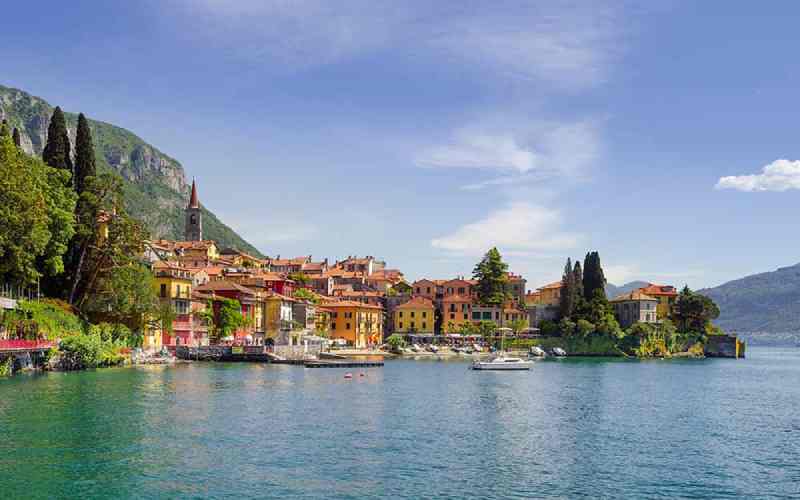
Prepare to leave the city behind and enter the peaceful embrace of Lake Como. Wander down small cobblestone walkways filled with vibrant homes and enjoy the cool and warm breezes that greet your face while you enjoy the pretty scenery. There are several ways to experience Lake Como’s magic. Put on your walking shoes and take an easy walk around the boundary of the lake. Moreover, take a leisurely trip on a ferry and take in the picturesque lakeside villages from a new angle. And what’s better than imagining yourself enjoying a delectable meal on a terrace beside a lake, the world seems to slow down as you take in the breathtaking surroundings. Hire a boat and go on an independent journey, discovering undiscovered spots and cooling down in the lake’s cold embrace. Lake Como in Italy offers you the opportunity to relax, experience the carefree Italian way of life, and make lifelong memories.
Day 5: Venice – Gondolas, Piazzas, and Venetian Delights
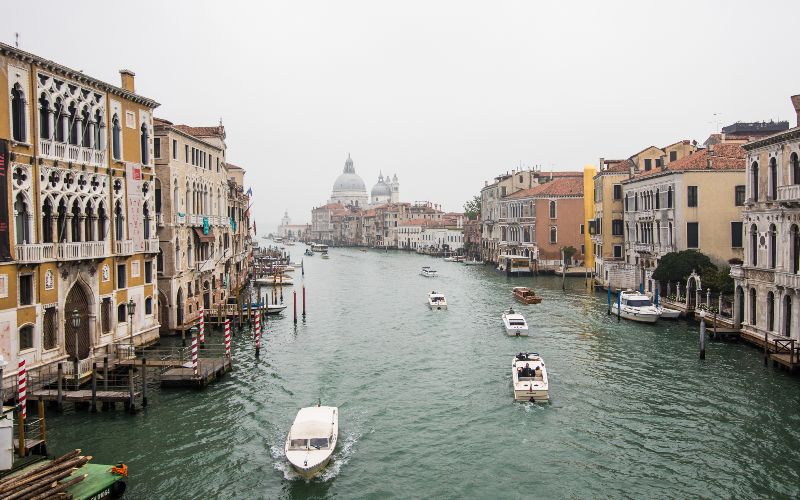
Taking day trips from Venice is a great way to see more of the Venetian area! Here, the air is heavy with passion, and the canals shimmer like ribbons. You can enjoy music on a gondola as you cruise the waterways and receive VIP treatment fit for a Venetian star. A bustling hub full of life, St. Mark’s Square welcomes you with the iconic Doge’s Palace. it is a magnificent reminder of the city’s rich past.
However, getting happily lost is what makes Venice so charming. Explore underground passageways where every bend reveals a delightful trattoria or hidden piazza. Allow the city to astound you with its unanticipated beauty. Enjoy a delicious dinner with a Venetian flavor to round off an amazing day.
Day 6: Florence: An Eye-Candy Renaissance Feast
This city is the birthplace of the Renaissance. Imagine being up close and personal with two of the greatest works of art ever created: Michelangelo’s magnificent David and Botticelli’s enthralling Birth of Venus. Florence, however, has more to offer than merely world-class museums. Explore the city beyond the masterpieces, with many things to do in Florence. Be humbled by the Duomo, an enormous church with an amazing dome that dominates the skyline. It is an architectural wonder. Take a walk along the Ponte Vecchio, a bridge brimming with glistening jewelry stores, a sight that has been seen since the Middle Ages. Explore quaint piazzas, discover secret artist workshops displaying age-old crafts, or just lose yourself in the charm of the meandering streets. Maybe you may even come upon a one-of-a-kind memento to cherish your fantastic journey in the heart of Renaissance Italy.
Day 7: Cinque Terre -Hike and Chill
The final destination is Cinque Terre. Get ready for a climb with a million-dollar view and leave the city behind. Imagine bright flowers dropping from balconies, vibrant houses tumbling from rocks, and the scent of freshly caught fish filling the air. Enjoy a delicious meal al fresco, rest on this stunning beach, and swim in a secret cove. It is a hiking paradise with amazing scenery and a touch of the Italian Riviera’s relaxed atmosphere.
This Northern Italy itinerary 7 days is merely a suggestion. It can be customized according to your travel preferences and interests. Make sure to reserve your lodging and travel well in advance, particularly during the busiest times of the year.
What to Pack for Your Northern Italy Itinerary
Comfortable Shoes: Pack for a lot of walking through quaint towns and on cobblestone streets. Bring supportive and cozy walking shoes.
Layers: The climate in Northern Italy varies with the region and time of year. Take lightweight coats, sweaters, and breezy shirts or other layers that you can throw on and off.
Formal Wear (Optional): Bring something more sophisticated if you intend to go to fancy restaurants or operas. Still, most circumstances do not require formal attire.
Sun Protection: Sunscreen, a hat, and sunglasses are necessities all year round, but they are especially important in the summer.
Swimsuit (optional): If you plan to visit any lakeside towns, such as Garda or Como, bring along a swimsuit so you can cool off.
Travel Adapter: The European plug with two prongs is used in Italy. In order to keep your electronics charged, do not forget to bring a travel adapter
Travel Tips for Northern Italy
- You can purchase museum passes. Cities such as Milan, Venice, and Florence provide museum passes that allow you to enter at discounted rates at several sites, which saves you both money and time.
- You should accept Italy public transportation. buses and trains are economical, effective means of traveling between sites and through large cities. When traveling through rural areas, think about renting a car.
- You can improve your experience and interactions with locals by learning a few basic Italian phrases
- Pack lightweight, versatile clothing. The seasons have an impact on Northern Italy’s climate. Use easily combined and matched layers to adapt to changing temperatures.
- Following the siesta tradition, many Italian stores and eateries close for a noon break. Consider these lunch breaks while organizing your schedule, and do not be scared to have a long lunch yourself!
- You should take precautions when visiting this place, just like anywhere else. In crowded areas, be especially aware of small-time theft. Try not to carry a lot of cash and protect your belongings.
- Northern Italy is a foodie’s haven. Enjoy freshly made pasta dishes, sample regional specialties, and do not miss the chance to taste local wines.
- You should respect regional traditions: When visiting cathedrals and churches, wear modest clothing. Watch out for noise levels in public places, and avoid eating or drinking when you are walking.
- You should avoid trying to fit too much into your schedule. Take some time to relax and take in the stunning views of Northern Italy while walking through charming towns.
Conclusion
Hopefully, this brief overview of some of the most attractive places in North Italy has inspired your desire for exploration. From the artistic Florence to the picturesque Lake Como, every location offers a unique perspective on Italian beauty. This Northern Italy itinerary highlights some of the most popular places. Many unknown gems in North Italy are waiting to be discovered. Foodies can try fresh seafood in quaint seaside towns like Portofino or go on an elegant exploration of Piedmont’s wine districts. History lovers can tour the medieval castles scattered over the landscape or dive into the ancient ruins of Verona. The breathtaking Dolomites are a haven for hikers, bikers, and skiers, and they can bring comfort to nature enthusiasts. Everyone can find something to enjoy in Northern Italy, according to their interests
So, depending on your choice of exploration, put down the itinerary, follow the Italy travel guide and pick up your walking shoes or swimsuit. Its charm will captivate you upon arrival and make you crave the good life even after you have left to return home. This is Northern Italy. Proceed and make explorations.
